How to Recover Files Too Large for Recycle Bin
Quick Navigation:
- Folder is too big to recycle
- True user case
- Recover large deleted files
- Customize recycle bin settings
Error Message - This Folder Is Too Big to Recycle
Have you ever receive this error "This folder is too big to recycle, do you want to permanently delete it?".
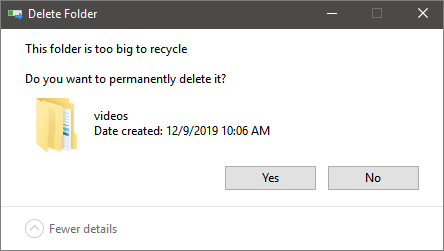
Where does the permanently deleted file go? Generally speaking, when you first delete a file on a computer by right-clicking delete option or press "Delete" key, it goes to the computer's Recycle Bin, Trash, or something similar depending on your operating system. It will remain there until you empty the Recycle Bin or restore the file from it. Recovering data from the Recycle Bin is practical if you remove the files/folders by pressing the DEL key or by right-clicking the item and choosing Delete.
However, it's not always working using this way. If the deleted files are larger than the maximum size of the Recycle Bin, these items will bypass the Recycle Bin and be deleted permanently. Just as the picture shows, the maximum size of Recycle Bin is 8998MB, if your files or folders are larger than 8998MB, you would receive this error.

In order to solve doubts for users, I plan to carry out a deep discussion of the "file too big for the Recycle Bin" issue. Three aspects will be involved in the following content:
- 1. True user case of files too big for the Recycle Bin
- 2. How to restore large deleted files
- 3. How to customize Recycle Bin settings to solve this problem
Files Deleted Permanently Rather Than Go to the Recycle Bin
"I mistakenly deleted a whole folder from a partition this morning, in which I lost dozens of very important large files, including Photoshop PSD files that are larger than 12GB. The deleted folder bypassed the Recycle Bin since the folder size was too large for it. Thus, I can't find the deleted items in the Recycle Bin and recover the large files from it. What's the other way I should try to recover files that are too large for Recycle Bin?"
As I have mentioned above, once you delete the items when the message "file too big for Recycle Bin" appears, they will be deleted permanently. This operation is like the "Shift + Delete" activity. However, the items are still on the hard drive, at least until another file or part of another file is saved to the same location. You only remove the entry and not the files themselves. As a result, the files are still recoverable as long as they are not overwritten. In this case, only reliable and professional data recovery software can help you recover files too large for Recycle Bin.
How to Recover Large Deleted Files
Ideally, you should stop using the device to avoid data overwritten. Then, apply a professional data recovery program to scan and recover the deleted files. The sooner you do the data recovery after you delete your files, the better the chances of recovery will be. To save your time and energy, I have a recommendation – Deep Data Recovery.
With the data recovery software - Deep Data Recovery, you can easily perform the recovery of large files that have bypassed the Recycle Bin and of the files lost in other situations in simple steps. (Jump to the end of the article for a more detailed introduction of this tool if you have questions.)estions.)
Step 1: Select file types that you want to recover
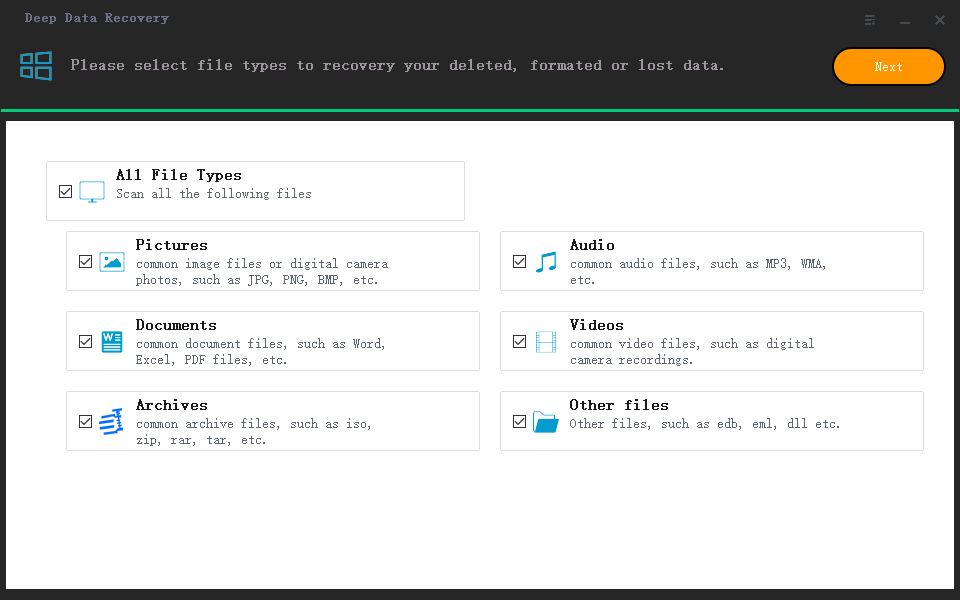
Step 2.Choose the exact file location and then click the "Scan" button to continue.
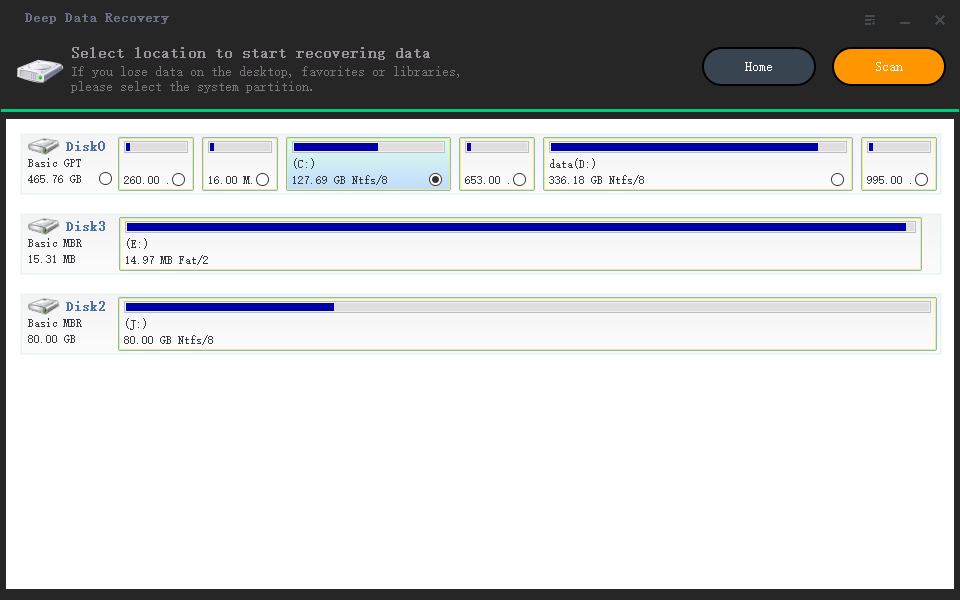
Step 3.After the process, select the "Deleted Files" and "Other Lost Files" folders in the left panel. Then, you can apply the "Filter" feature or click the "Search files or folders" button to find the deleted files.
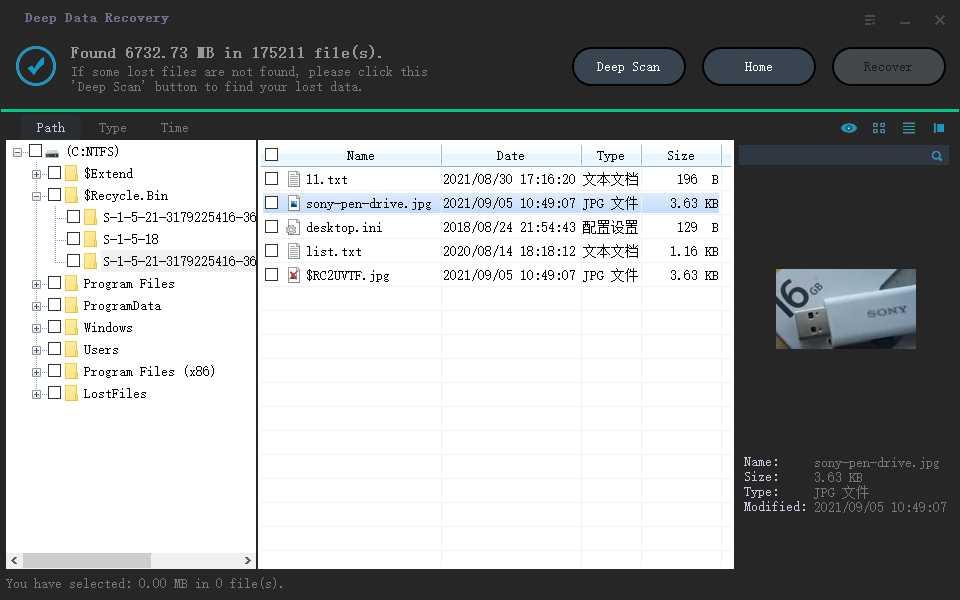
Step 4.Click the "Recover" button and save the restored files – ideally, it should be different from the original one.
How to Customize Recycle Bin Settings
If you don't want the deleted files, whether large or small, to bypass the Recycle Bin, you can change Recycle Bin properties.
Step 1.Right-click "Recycle Bin". Choose "Properties".
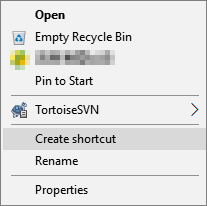
Quick Tip: If you can't find the icon in the desktop, you can control the desktop icons on Settings > Personalization > Themes, and clicking the Desktop icon settings option under the "Related Settings" section.
Step 2.Under the "Settings for selected location" section, select the "Custom size" option.
In the "Maximum size (MB)" field, specify the maximum hard drive space in megabyte that Recycle Bin can use on the particular partition. For example, if you have a 500GB drive, and you want to Recycle Bin to use 50GB of space, then you need to specify 51200 megabytes (because 1GB is equal to 1024MB).
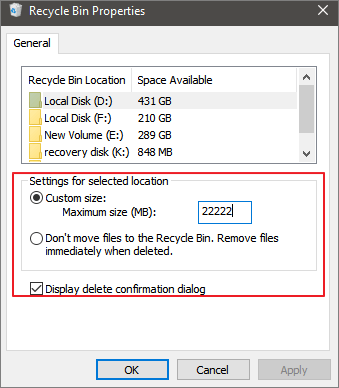
Step 3.Click the "Apply" button. Click the "OK" button.
Once you've completed the steps, the Recycle Bin will be able to keep more or fewer files from a particular location depending on your configuration. While each partition configured on your device has its own Recycle Bin, removable drives like SD cards and USB flash drives are not supported, which means that as you delete files on an SD card or a USB, they'll be erased permanently.
Conclusion
As a trustworthy and versatile tool, Deep Data Recovery can eliminate your worries whenever you get a file lost. Don't miss this simple but powerful tool to protect your data security. With this tool installed on your Windows computer, you can: you can:
- Recover deleted, formatted, or lost files.
- Restore multiple file types, including photos, videos, audio files, email, files created by Microsoft Office, Adobe software, and more.
- Retrieve data from multiple devices, including hard drive, memory card, USB flash drive, digital camera, mobile devices, and other storage media.
- Get back content lost in multiple situations: accidental deletion/formatting, OS crash, partition loss, and more.
Deep Data Recovery can always help you, never worry about data loss.ata loss.
Related Articles
- How to Recover Files from USB Flash Drive with or Without Software
- How to Recover Formatted BitLocker Encrypted Hard Drive
- How to Recover Files After Factory Reset Laptop/PC [Solved]
- SD Card and Disk Video Recovery Free: Recover Deleted Videos from SD Card